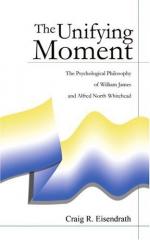|
This section contains 5,380 words (approx. 18 pages at 300 words per page) |

|
SOURCE: “Robert Duncan's ‘Momentous Inconclusions,’” in Sagetrieb, Vol. 2, No. 2, Fall, 1983, pp. 71-84.
In the following essay, Johnson considers Robert Duncan's poetry in relation to Whitehead's process philosophy.
I'd cut the warp to weave that web
in the air
and here
let image perish in image,
leave writer and reader
up in the air
to draw
momentous
inconclusions,
ropes of the first water returned by a rhetoric
the rain swells.
The teasing whimsy of these opening lines of Robert Duncan's “Where It Appears, Passages 4”1 would seem to distance him from Roy Harvey Pearce's “hope for poetry.” A dozen years ago, discussing what Whitman means to contemporary poets and especially Duncan, Pearce defined the mission of the American poet as “simply to tell us the truth in such a way that it will be a new truth, and in its newness will renew us and our capacity to have faith...
|
This section contains 5,380 words (approx. 18 pages at 300 words per page) |

|


